This is part of a series of posts about the Nikon D5. The series starts here.
So far, it’s looking like the D5 uses digital gain for some of its ISO settings. Specifically, it looks like ISO 125 and ISO 160 are implemented by in-camera pushes of the same analog amplification settings as ISO 100.
Some people have claimed the such pushing damages the images more then the equivalent push in post. It didn’t seen right to me. Sure, in-camera pushes can’t use as much precision as Lr can. Sure, Lr can be smart )read film-like) about highlight clipping. But, if you stay away from clipping, I reasoned that the effects should be invisible.
Are they?
Here’s the setup:
- Camera on tripod
- Nikon 24/1.4 lens set to f/5.6
- Base shutter speed 0/8 seconds regardless of ISO
- ISO 100
- EFCS
- Shutter delay = 3 seconds
- Liveview focusing
- Developed with Lr 2015.5
- Default settings except for below
- Sharpening off
- Noise reduction off
- WB to the normal exposure, and applied that to all others
The scene:
With the camera set to ISO 125, I made a series of exposures progressively one stop shorter shutter speed until I got to five stops underexposed. In Lr, I pushed the images using the exposure control by as much as they’d be underexposed. Then, with the camera set to ISO 100, I made a the same series of exposures. In Lr, I pushed the images using the exposure control by as much as they’d be underexposed, plus another 1/3 of a stop to make up for the extra in-camera digital gain the first set got.
Here are a series of 200% crops:
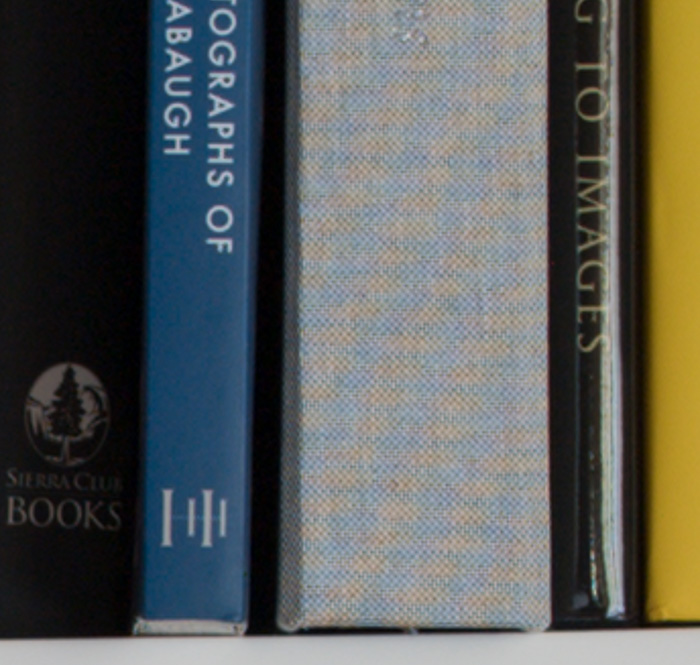
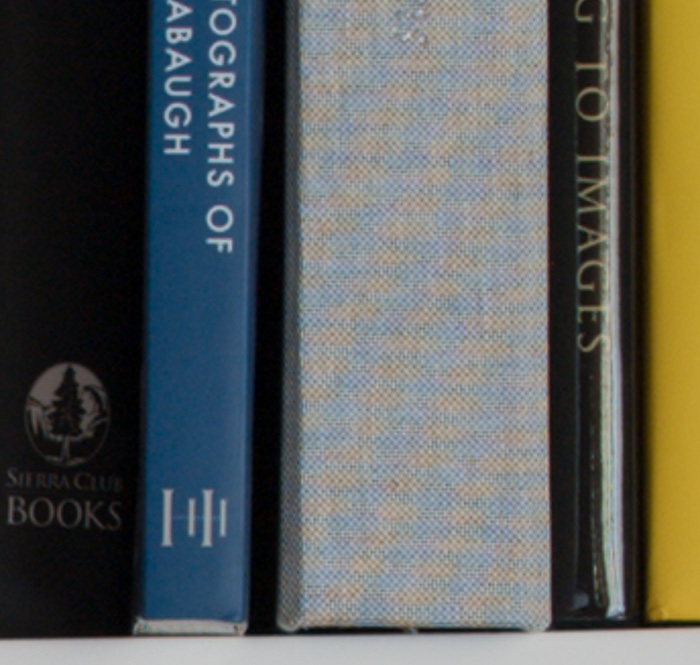
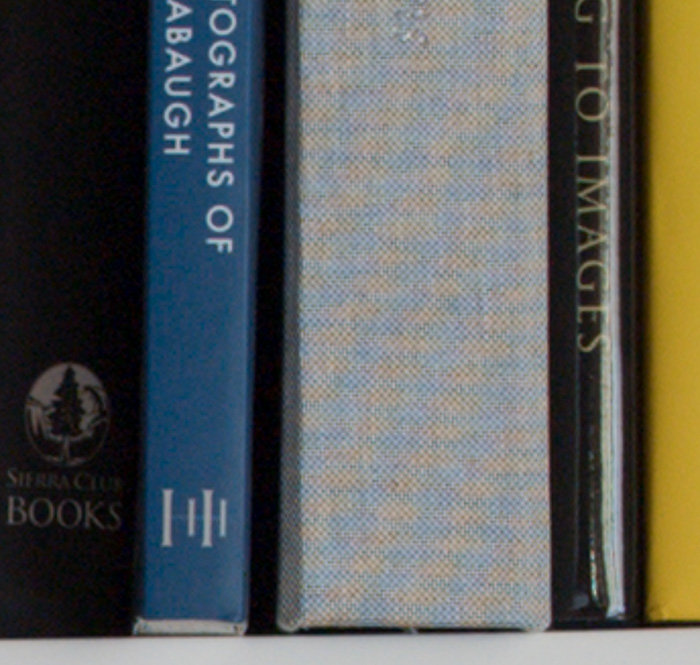
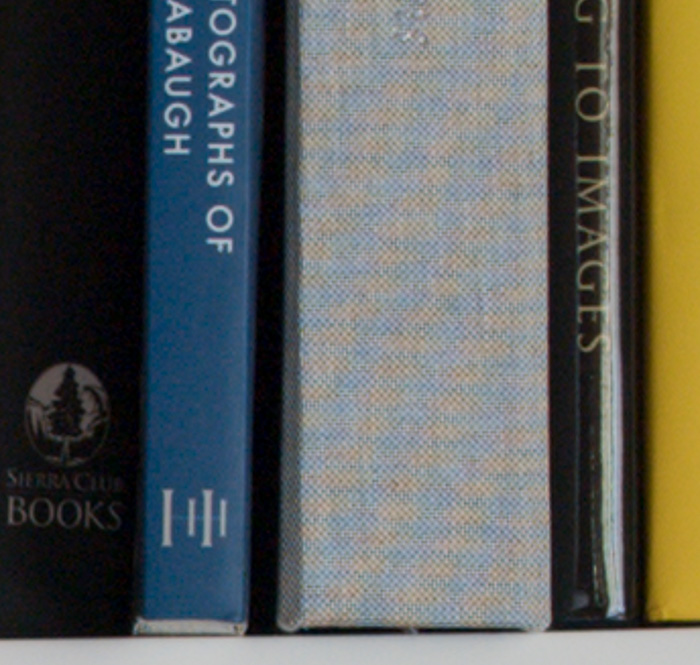
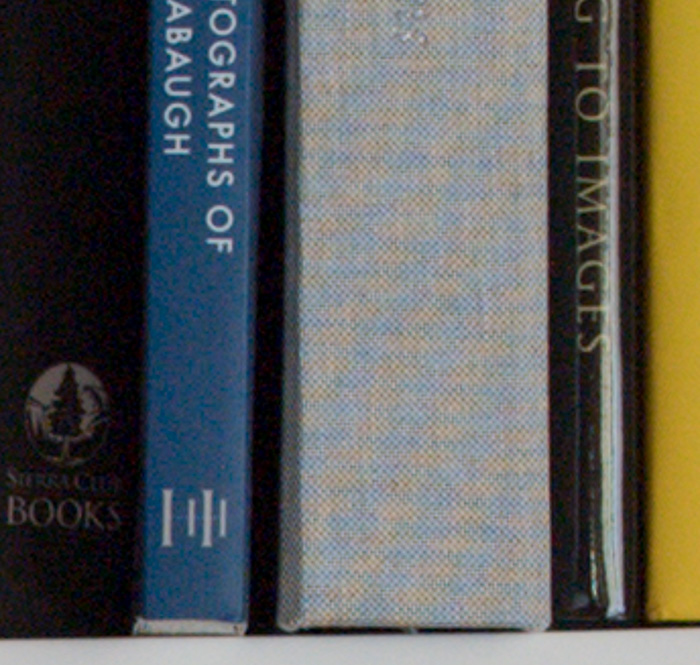

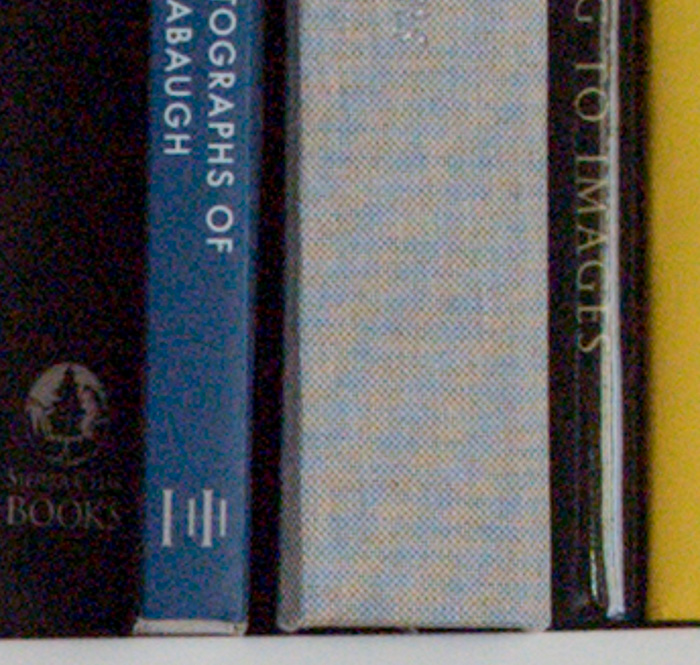
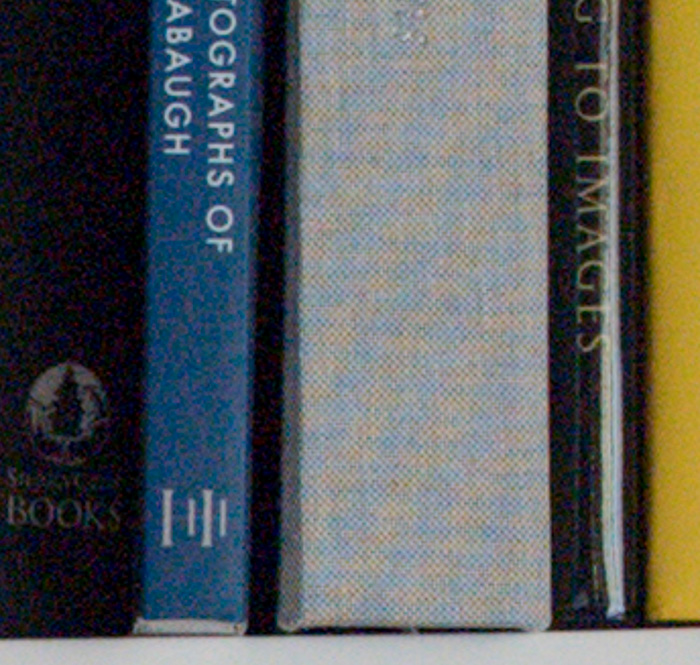
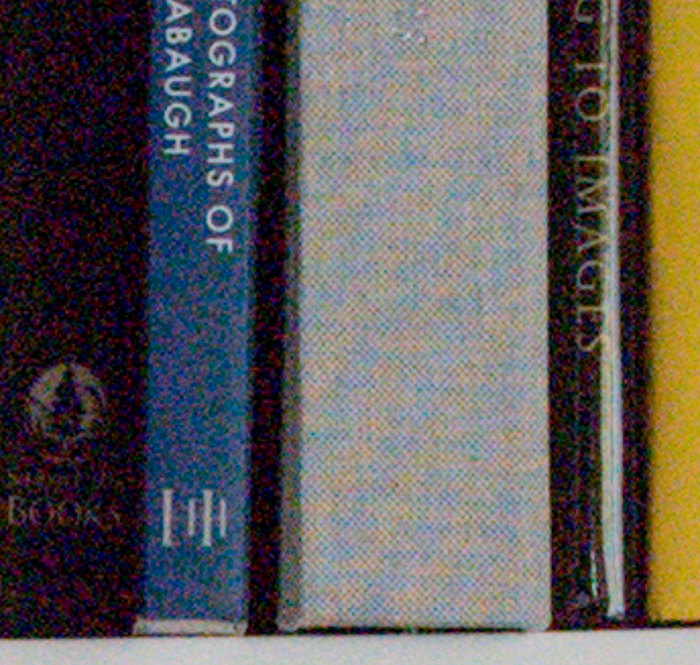
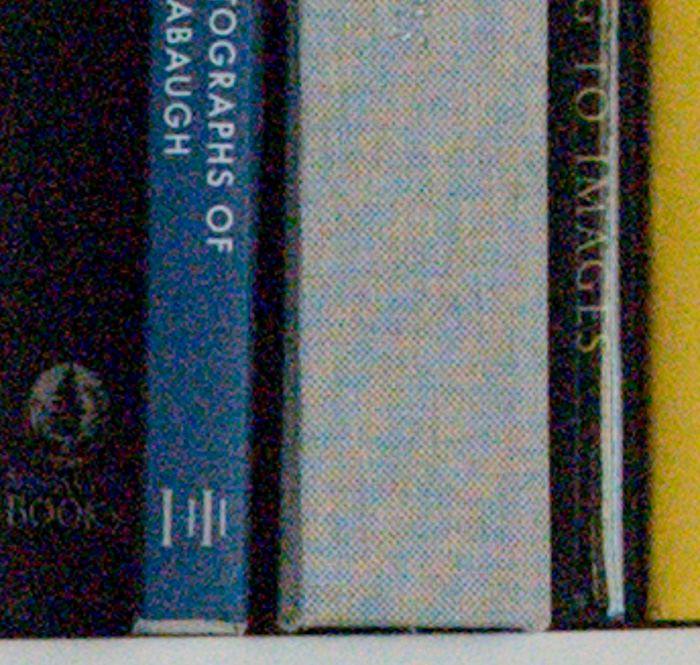

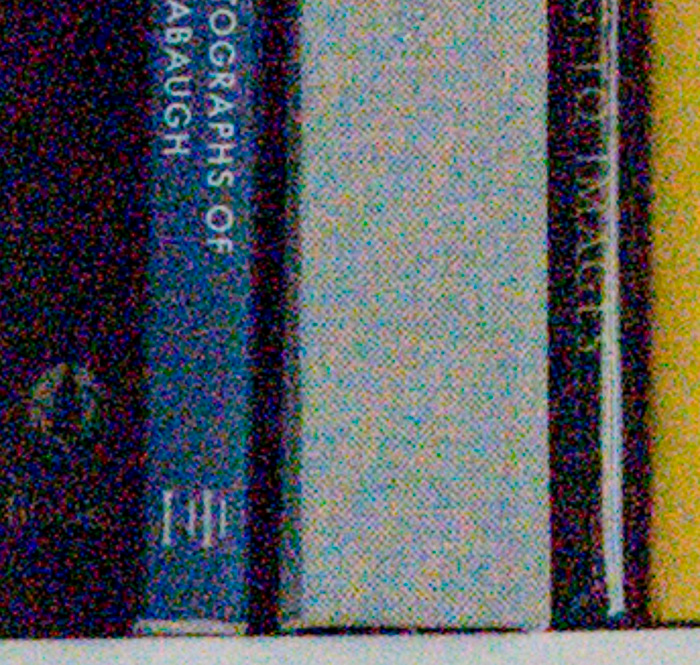
To make it fair, let’s back off 1/3 stop on that last image:

I sure can’t see any material differences.
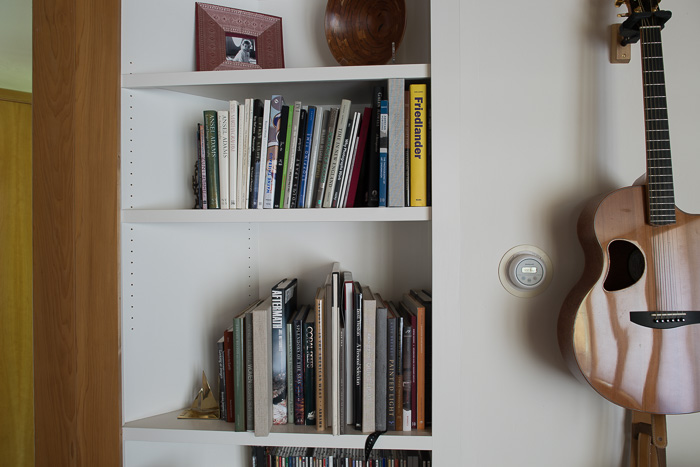
Leave a Reply